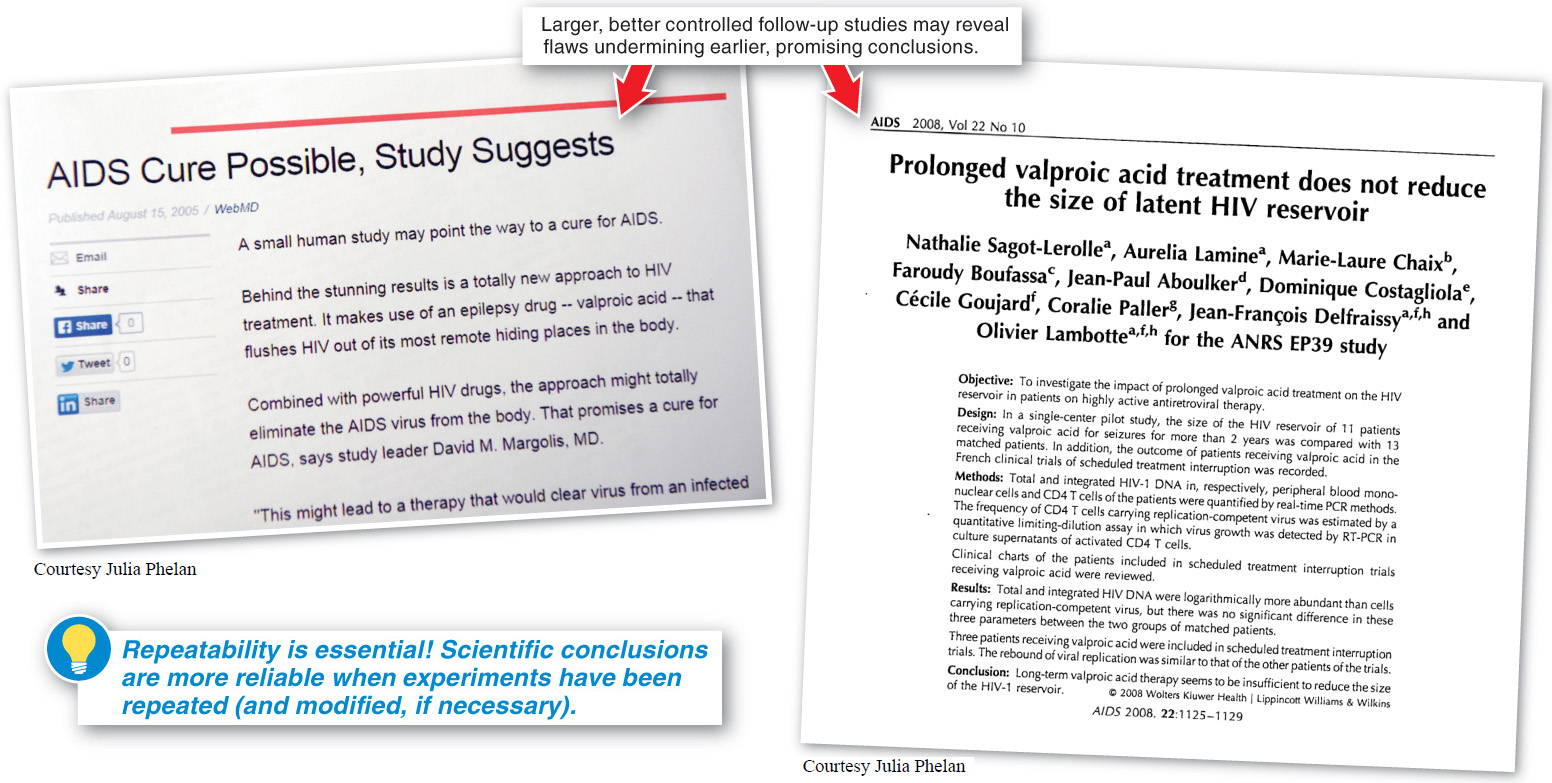Can science be misleading? How can we know?
In 2005, a study showed that some patients being treated for HIV infection who were also taking an epilepsy drug called valproic acid had significantly reduced numbers of HIV particles in their blood. Newspaper headlines announced this finding—

A powerful way to demonstrate that observed differences between a treatment group and a control group truly reflect the effect of the treatment is for the researchers to conduct the experiment over and over again. Even better is to have other research groups repeat the experiment and get the same results. Researchers describe this desired characteristic of experiments by saying that an experiment must be “reproducible” and “repeatable.”
Do megadoses of vitamin C reduce cancer risk?
An experiment that can be done over and over again by a variety of researchers to give the same results is an effective defense against biases (which we discuss in the next section) and reflects a well-
22
When a study is repeated (also referred to as “replicating” a study), sometimes a tiny variation in the experimental design can lead to a different outcome; this can help us isolate the variable that is primarily responsible for the outcome of the experiment. Alternatively, when experiments are repeated and the same results are obtained, our confidence in them is increased.
TAKE-HOME MESSAGE 1.13
Experiments and their outcomes must be repeatable for their conclusions to be considered valid and widely accepted.
Why do scientists commonly repeat the same experiment over and over again?
Reproducible results powerfully demonstrate that observed differences between experimental and control groups are truly a result of the intentional differences between these groups.